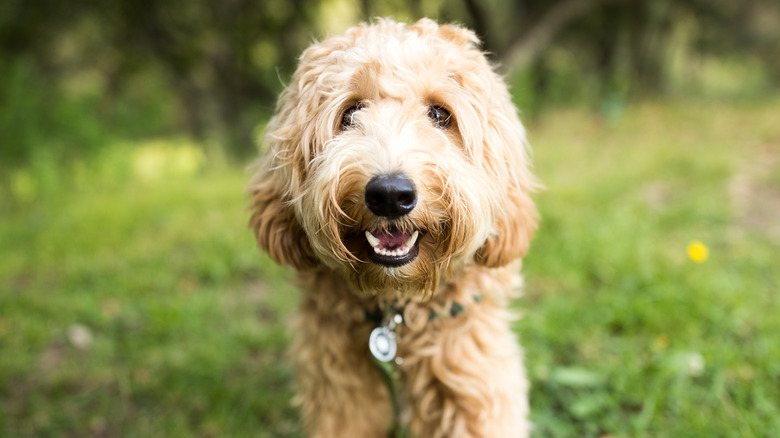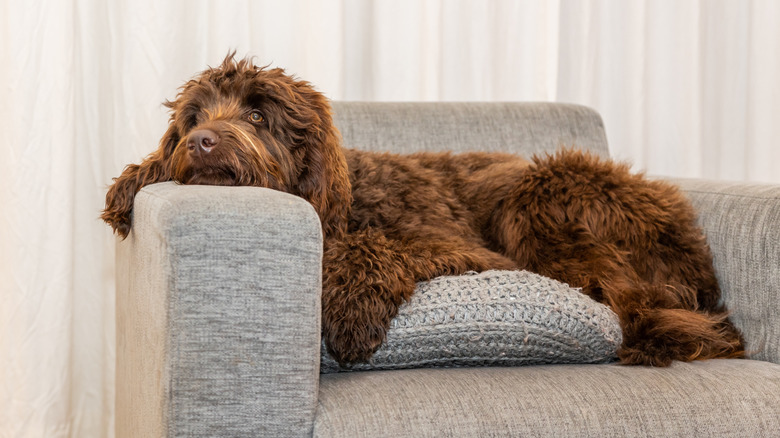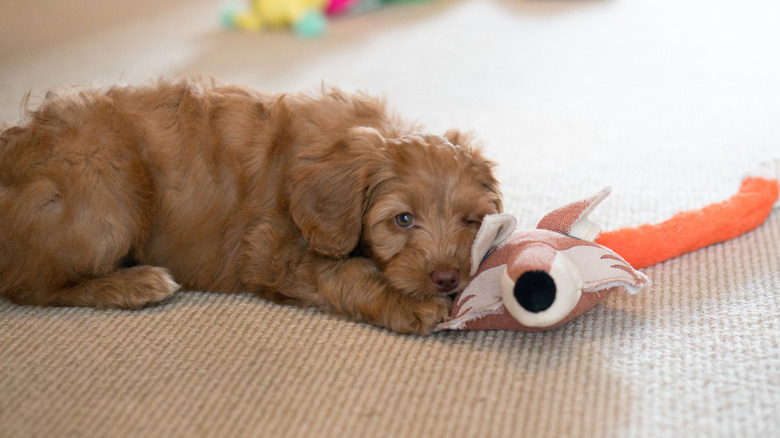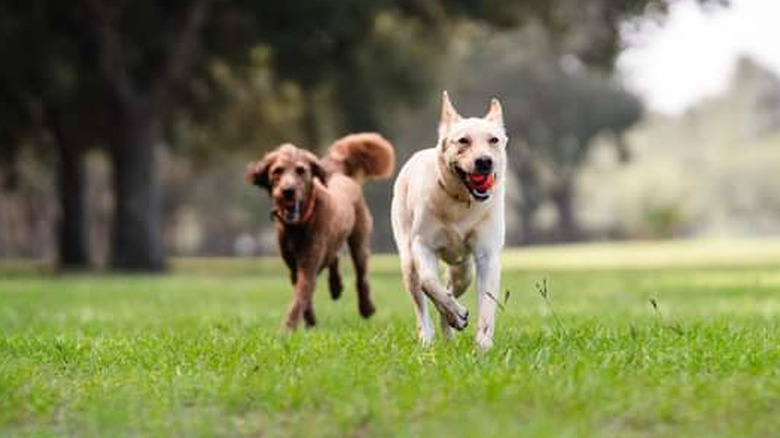The History Of Labradoodles Will Have You Think Twice About Owning One
Labradoodles rank as one of the most popular types of "doodle" dog breeds today. A combination of the Labrador retriever and the standard poodle, Labradoodles were also one of the first "designer dog" breeds available. However, multiple issues mired their origin story, which the breed's creator, Wally Conron, regrets.
When Conron, the puppy breeding manager for the Royal Guide Dog Association of Australia, established the Labradoodle in the 1980s, he hoped to produce a dog that could serve as a better overall service animal. He sought to combine the intelligence and "hypoallergenic" coat of a poodle with the easy trainability and loving nature of the Labrador retriever. The result would be an ideal guide dog to help blind people — or so Conron proposed when the resulting puppies could not find homes.
Despite Conron's intentions, breeders began selling their own Labradoodles due to their popularity and profit as designer dogs. No breed standard existed to ensure integrity. Since Labradoodles aren't a developed breed, there was no predictability regarding how the puppies would turn out. Their looks and behavior could be a mix of their Labrador or poodle parentage, with no consistent outcome. "I've done so much harm to pure breeding and made many charlatans quite rich," Conron lamented to Dr. Stanley Coren of Psychology Today. "I wonder, in my retirement, whether we bred a designer dog—or a disaster!"
Labradoodles as guide dogs: a PR move that spiraled out of control
Despite Wally Conron's best attempts to create a highly trainable designer breed that caused fewer allergic reactions, families were initially hesitant to accept a non-purebred dog. When he failed to place all of his first litter of Labradoodles, he turned to his company's PR team for help, urging them to spread the word with news outlets in order to drum up interest.
The move, though successful, backfired in a major way. What started as a true attempt to create a dog that would benefit people became a nightmare for Conron when other breeders began to tout the mix as "premium." "They're selling them for more than a purebred is worth and they're not going into the backgrounds of the parents of the dogs. There are so many poodle crosses having fits, problems with their eyes, hips, and elbows, and a lot have epilepsy," Conron expressed to Psychology Today. "There are a few ethical breeders, but very very few."
Labradoodles may not be allergen-friendly
Back when Wally Conron created the Labradoodle, it was believed that the poodle's coat type made them hypoallergenic. Given this, Conron attempted to place a poodle as a guide dog with a client whose husband lived with a long-haired canine allergy. "Over the period of three years, I tried 33 standard poodles, but not one was successful," Conron explained (via The New York Times). As a result, he decided to create a poodle-Labrador mix. Of the resulting three puppies, only one didn't set off the allergies of his client's husband.
Labradoodles, like their poodle parents, are considered non-shedding, which is not the same as being truly hypoallergenic. Both breeds have curly hair, which may shed less or produce lower amounts of dander than some other dogs. Labradoodles can be more or less allergen-friendly depending on their generation and coat type.
The three coat varieties — wooly, fleece, and hair – all shed differently and may cause more or less sensitivity for their owners. Additionally, Labradoodles that are F1 (50/50 Labrador retriever and poodle) are not viewed as hypoallergenic. Other generations of Labradoodle, such as F2 (results from two F1s) and multi-gen (results from two F2s), may be more allergen-friendly depending on their coats.
The potential dangers of poor Labradoodle breeding practices
While some research has suggested that mixed-breed dogs are less prone to the genetic problems of the breeds they stem from, they can still be carriers of those issues. Since Labradoodles are bred to other Labradoodles, they may experience the health issues of both Labrador retrievers and poodles as a result. That list includes hip and elbow dysplasia, eye problems, and heart disease, per PetMD.
As Labradoodles are not recognized as a breed by the American Kennel Club (AKC) or considered purebred, there are no breed-specific standards for them. This, in addition to the variable genetics of crossing two purebred or mixed dogs, can lead to a lot of variation in how litters turn out, including differences in coat types. It's hard to predict if a litter will be more like one parent or the other, possess recessive genetic health issues, or have the right personality to be a good family pet or guide dog.
Though the breed creator has misgivings, many owners still find that a Labradoodle's temperament, grooming needs, and energy levels work well with their family. Taking the time to research both the breed and the breeder can ensure you find a happy, healthy, lifelong friend.



